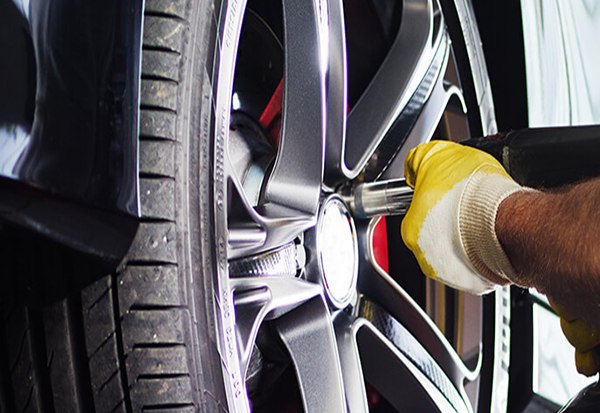Tire Rotation Service to Extend the Life of Your Tires

Mechanical issues in the vehicle may also cause uneven tire wear. The wheels need to not only be aligned with each other but also with the car. The wheel that is out of alignment will tend to be pulled along by the other wheels, causing uneven wear in that tire. If the alignment is such that the vehicle pulls to one side or the other, the driver will correct it by steering against the pull. Essentially, the car is constantly turning in this case, causing uneven tire wear. Additionally, if a tire is under or over-inflated, it will wear differently than the other tires on the vehicle. Rotating your tires will not help in this case and the inflation needs to be corrected.
Auto mechanics recommend tire rotation frequency and pattern based on your vehicle and driving habits. Depending on the vehicle, tire rotation may be recommended every 8,000 miles. The rotation pattern is typically moving the back wheels to the front, and the front to the back, but crossing them when moving to the back. If the tires are unidirectional, the rotation can only be rotated front to back on the same side of the vehicle to preserve the rotational direction of the tires. Most unidirectional tires can be moved from side to side if they are remounted.
The current school of thought recommends keeping the best tires on the rear wheels of the vehicle, whether it is front, or rear-wheel drive. The logic is that, if the rear wheels lose grip before the front wheels, an “oversteer” situation will occur, which is harder to control than an “understeer” situation. The intuitive idea that the front steering/driving tires need to be the best quality is not actually the case.
Tire wear becomes uneven for any number of reasons. Even tire wear is necessary to maintain consistent performance in the vehicle and to extend the overall life of a set of tires. Tire rotation service is the the practice of moving automobile wheels and tires from one position on the car to another, to ensure even tire wear.


